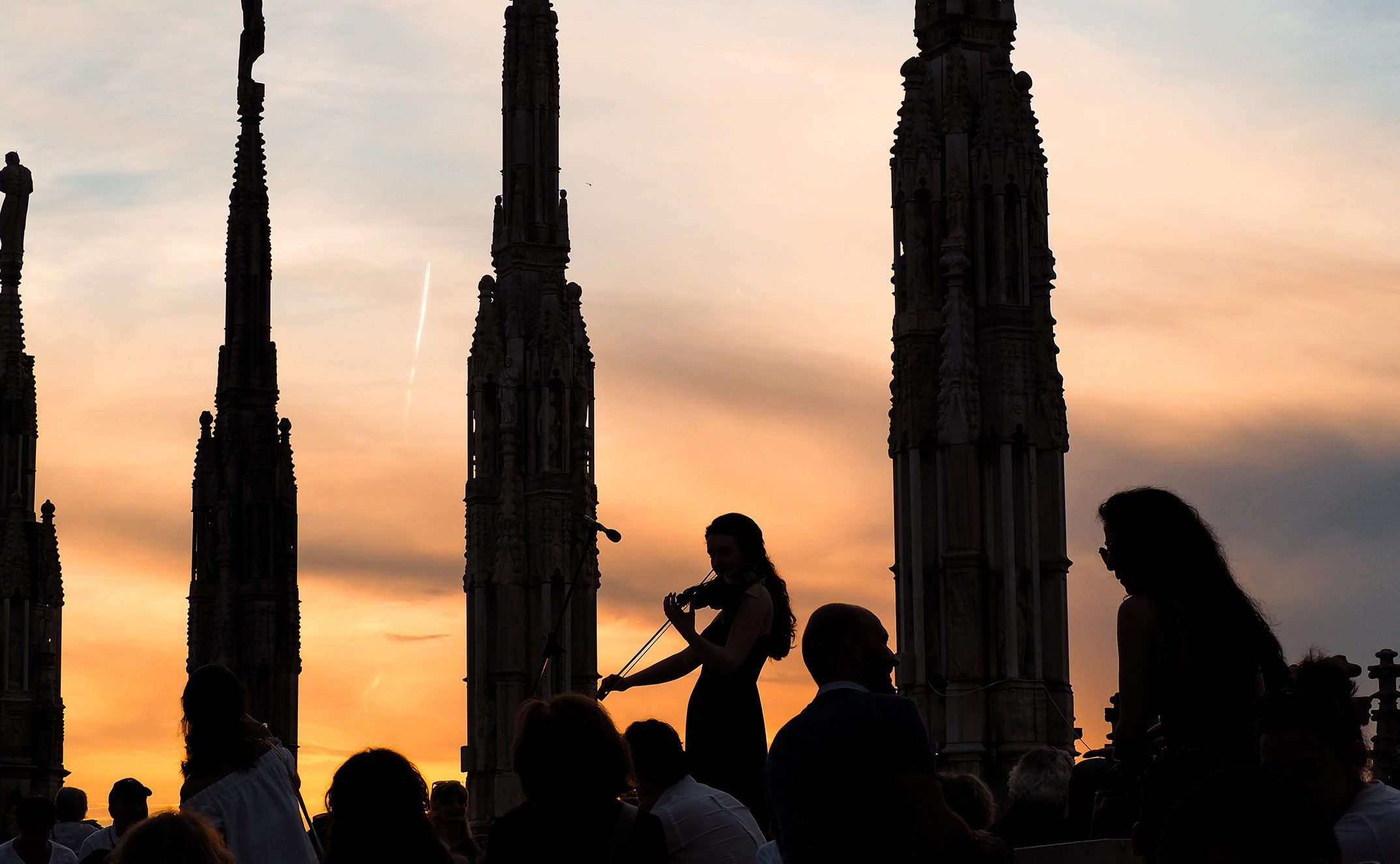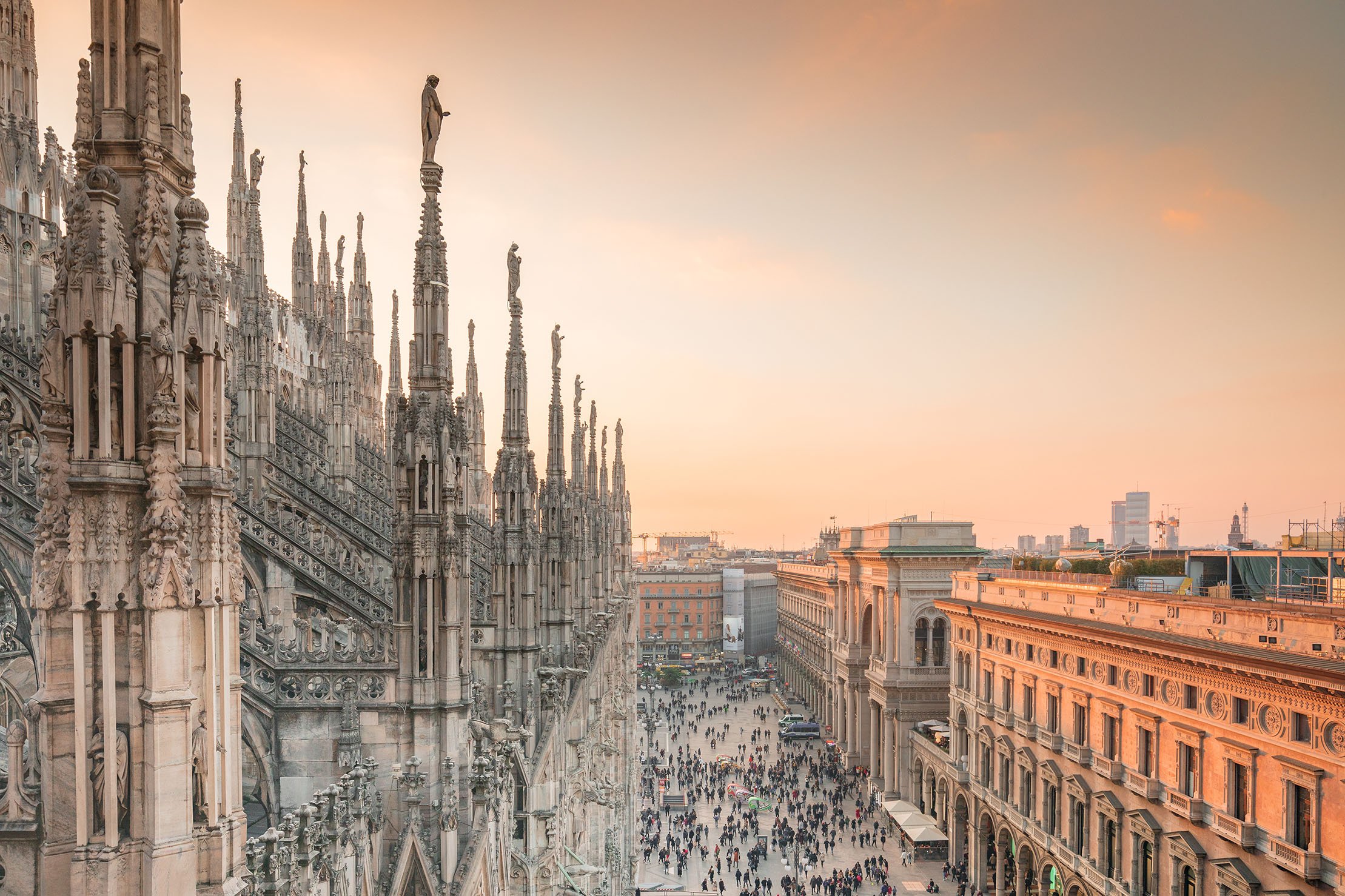Accessibility
Information for the Visit
Operators will provide both information and hospitality. Free entrance for the disabled and their accompanying persons. A manual wheelchair is available free of charge. It must be requested at the DuomoInfopoint (Piazza Duomo 14/A), leaving a document of identification.
Central Ticket Office DuomoInfopoint and DuomoShop-Sala delle Colonne
Sala delle Colonne is situated in piazza Duomo 14/A, and features three steps at the entrance. The entrance for people with disabilities is possible to the Hall from the Grande Museo del Duomo (closed on Wednesday).
Ticket Office – Museo del Duomo
The ticket office is situated at the entrance of Museo del Duomo, in Piazza Duomo, 12. The counter is 110 cm high.
Directional signs
The Monumental Complex, with the exception of the Museum, has directional arrows with indications printed in large letters (at least 7 cm) with a good contrast.
Accessibility at the monumental complex
Duomo di Milano can be accessed from the parvis along 2 ramps that are 20 m long, with handrail, and 8% maximum incline.
The two entrances, for the faithful and for visitors, present a short 15 cm ramp with 21% incline.
The aisles are broad and can be easily visited, while the weekly Chapel, the Baptistery of St. Stephen, the Scurolo (dark room) and the Crypt of St. Charles cannot be easily reached due to the stairs.
Visitors are informed that, due to construction works inside the Baptistery of San Giovanni alle Fonti, access to this area for people with motor disabilities and in particular wheelchairs will be inconvenienced from 29 January 2023 until the end of the works.
On the side of the main entrance, you pass a turnstile and climb 27 steps to reach the Baptistery of San Giovanni alle Fonti, which features a circular path of ca. 150 m, several steps and catwalks with minimum width 63 cm.
To access the site, people with motor disability must submit an explicit request to the Ticket Office when the ticket is being issued. They can visit the Baptistery by taking the lift that leads to the underground station situated in piazza Duomo at the corner with via Pellico.
Take the lift (88x165x147) to the basement floor, step out and turn left, pass the Atm Point, and on reaching the entrance with the turnstiles, do not enter but turn right and again right.
On reaching the entrance to the Baptistery, there is a bell with video entryphone at a height of 115 cm. The path inside the Baptistery is linked by four ramps with 12% maximum incline, length up to 7.5 m. One has a minimum width of 71 cm.
Wheelchair access is possible by using the ramp to enter the Cathedral from the front doors; the Terraces are accessible up to the first terrace (limited to the back choir area) everyday from 10 a.m. to 5 p.m. via the South Elevator (77x106x130).
If the latter is unavailable, the North Elevator (65x111x137) is used. The passage to reach the Terraces from the elevator shaft is 78 cm from the South Elevator and 68 cm from the North Elevator.
The Duomo Museum covers a surface area of 2000 m2 on the ground floor.
The entrance, situated on the left side of the Palazzo Reale’s courtyard, presents a small inclined ramp (5% inclination) and a double swing door (76 cm per door).
The visit to the exhibition halls unfolds along a circular path featuring ca. 5 m ramps with maximum 9% inclination.
All the halls are very large and most of them are quite dark.
Gian Galeazzo Hall, on the mezzanine floor of Palazzo Reale, is open for dedicated events, and can be reached via an elevator with 90 cm door.Paths leading above ground are marked. The alarm is both visual and sound-based.
The Church of San Gottardo in Corte is situated along the exhibition path of the Grande Museo del Duomo, where the internal passage from the museum to the church has steps.
We advise leaving the Palazzo Reale behind, and proceeding along via Carlo Maria Martini to reach via Palazzo Reale on the right. Via Palazzo Reale is crossed, half-way, by via Pecorari, where the Church of S. Gottardo in Corte stands. At this point it can be accessed without external steps.
The washroom situated in the sacristy is small and features: ante-bathroom with 51 cm door and washbasin, and a toilet with 53 cm door and WC (front 62 cm).
The equipped washroom is situated in the external facility, near Ticket Office 1. A small inclined ramp (7% inclination), one swing door (87 cm) and an inclined ramp (190 cm length and 8% inclination) lead to the equipped washroom, which features the following characteristics: washroom with door width 93 cm, suspended washbasin (front width 130 cm); floor level WC (front 100 cm, right side 23 cm, left side 120 cm, large vertical handle on the right side and handrail along the perimeter). Washroom signs have a good contrast, are affixed at eye level and are medium to large in size.
The washroom quipped for people with mobility disabilities at the Duomo Museum is situated at the end of the exhibition path. It can be accessed from Sala dei Bozzetti via two inclined ramps (7% inclination), and features: washroom with door width 76 cm; suspended WC (front 127 cm, right side 23 cm, left side 110 cm, large horizontal handle on the left side, and handrail along the perimeter). Washroom signs have a good contrast, are affixed at eye level, and are medium to large in size.
Within the Museum route, in the passage to the Church of St. Gotthard in the courtyard, a Baby Pit-stop is available for families with children, equipped with a washbasin and toilet suitable for toddlers, a nursing chair, changing table and bottle warmer.
ConTact with the Duomo

Visitors with visual impairments are offered an articulated guided tour service in the different areas of the Duomo Monumental Complex, conducted by specialized operators with the help of tactile boards produced with thick printing technology, accompanied by captions in Braille and text in enlarged characters.
The eleven plates, produced in collaboration with the Istituto dei Ciechi di Milano and theUnione Italiana Ciechi e Ipovedenti, offer a broad overview of the monument, from the square to the building plan, from the façade to the terraces, and depict some of its main decorative elements such as the stained-glass windows, spires, and rampant arches. The tour can be completed with a tactile exploration of twenty original works on display at the Cathedral Museum.
The plates are also made available at the Cathedral Museum for independent visitors.
For information and reservations:
Office for Educational Services
+39 02 361691 – Int.3
Thanks to








